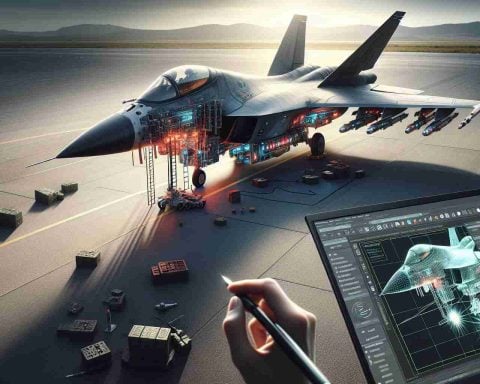A rare event unfolded at Kadena Air Base in Okinawa, Japan, when an F-22 Raptor experienced a dramatic tire blowout while preparing for takeoff. Aviation enthusiast @ma6400 captured the extraordinary scene, providing keen insight into the perils faced by high-performance military jets. Tire blowouts on aircraft like the F-22 are not just mechanical failures — they pose significant risks to the aircraft and pilot safety.
The Moments of Crisis
As the F-22 Raptor rolled along the runway at high speed, a sudden burst in the left main landing gear tire prompted the pilot to abort the takeoff. Images revealed the aircraft tilting slightly to the side, highlighting the quick decision to avoid catastrophe. The high stakes of military aviation mean situations like these, captured on film, are seldom witnessed by the public.
The Larger Picture
This incident shines a light on how even the world’s most advanced fighter jets can be vulnerable to such dynamic challenges. From massive thermal stress to the incredible friction encountered during rapid deceleration, the F-22’s situation underscores the daily battles fought by military machinery. The rigors of military flight not only test a pilot’s mettle but also the very fabric of aerospace technology.
A Broader Context
Military aviation isn’t the only realm to harbor these risks. On the civilian front, similar scenarios have unfolded recently, such as a United Airlines incident in Denver. Evidently, whether military or commercial, tire integrity remains a pivotal aspect of aviation safety. The captured images from Kadena Air Base thus serve as a potent reminder of these universal challenges and the shared vigilance required to protect air passengers and crew worldwide.
Unseen Threats in the Skies: The Hidden Dangers of Aircraft Operations
When we hear about incidents like the F-22 Raptor tire blowout at Kadena Air Base, it raises broader questions about aviation safety that affects everyone, from military personnel to commercial airline passengers. While the dramatic images and stories from such events capture our attention, there is much more at play behind the scenes that impacts both the aviation industry and our everyday lives.
The Engineering Behind Aviation Tires
Aircraft tires, whether on military jets like the F-22 or commercial airliners, are marvels of engineering. They are designed to withstand enormous pressure, temperature fluctuations, and rapid decompression. A tire failure can lead to disastrous outcomes, highlighting the importance of rigorous manufacturing standards and maintenance practices. It’s fascinating to note that aircraft tires are filled with nitrogen instead of air. Why? Nitrogen is less likely to combust under high temperatures, a critical factor when considering the heat generated during landing and takeoff.
Economic Implications
When tire failures occur, they don’t just pose safety risks; they carry significant economic costs. Incidents can lead to grounding of aircraft, expensive repairs, and delays affecting hundreds of passengers or military operations. Airlines and military forces alike have to invest heavily in maintenance and spare parts inventory, which ultimately impacts the budget and operational readiness. Communities dependent on the efficiency of aviation, like airport towns or countries reliant on tourism, can suffer indirect economic consequences from such incidents.
The Controversies Surrounding Aviation Safety
Are current safety regulations sufficient to prevent tire-related incidents? This is a contentious topic among aviation experts. Critics argue that while regulations exist, enforcement and oversight may differ significantly between countries and organizations. Furthermore, there’s an ongoing debate about the environmental impact of producing and maintaining high-performance tires, especially their disposal, as they often contain materials that are difficult to recycle.
What Are the Lessons Learned?
How can such tire incidents be minimized? Training is crucial—both for pilots to handle emergencies and for ground staff to conduct precise inspections. Technological advances, like the use of sensors for real-time monitoring of tire conditions, are being explored. Additionally, there’s a push towards developing stronger, more heat-resistant materials for tire manufacturing.
Your Role in Aviation Safety
As a passenger, what can you do? Stay informed about the safety records of airlines, and always pay attention to crew instructions during flights. Participation in frequent flyer programs can also give you insights into an airline’s operational reliability.
For more information on aviation safety standards and developments, visit FAA or IATA.
In an age where we rely heavily on air travel, understanding these underlying challenges goes a long way in appreciating the complexities involved and the silent effort put forth by countless individuals to keep our skies safe.


















